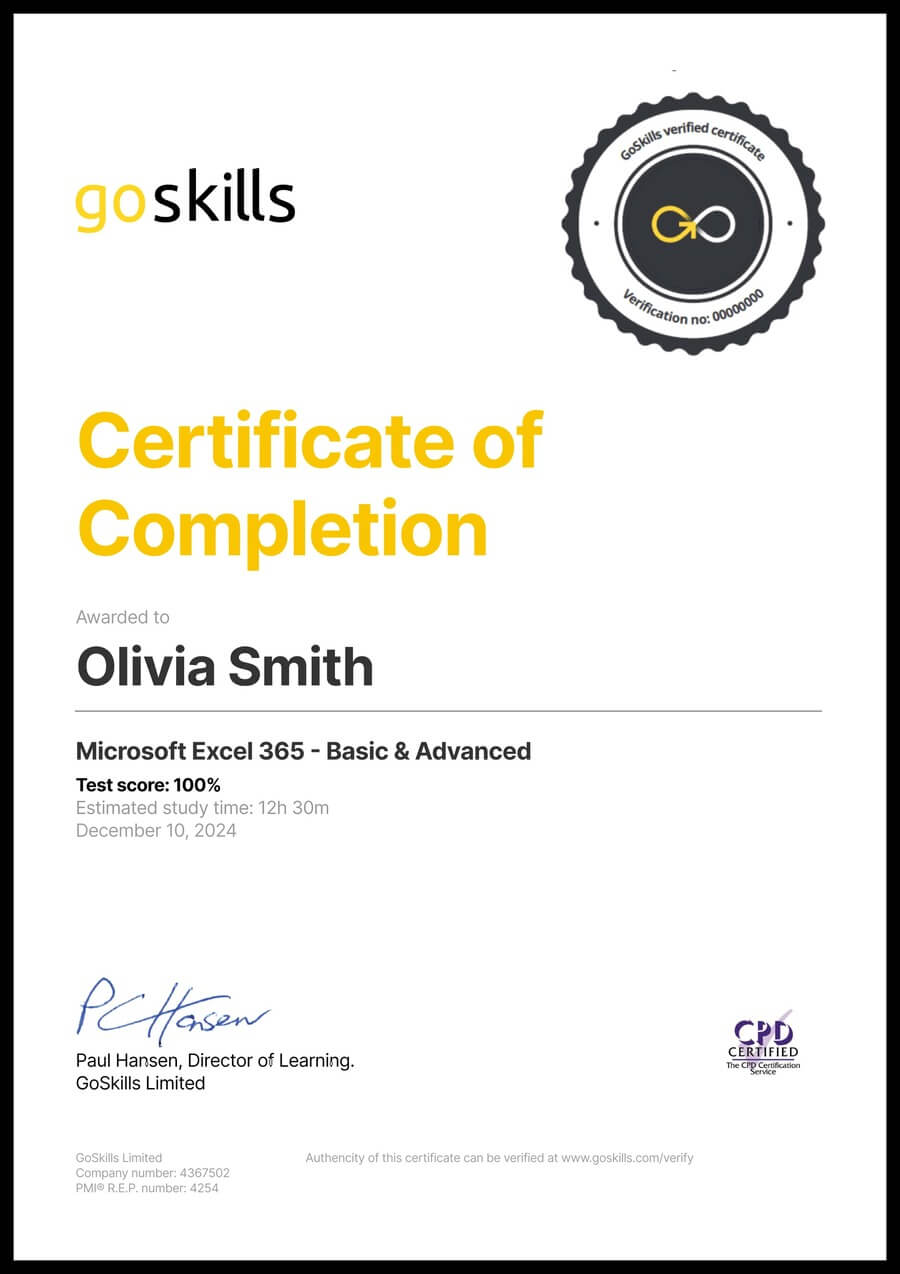Microsoft Access Online Course | Basic Training - GoSkills
Microsoft Access 2013
Skills you’ll gain
For more recent versions of Access - 2021, 2019, and 2016 - we recommend our latest course: Microsoft Access for Beginners.
New to Access or need a refresher? This online course is designed for a beginner and includes intermediate and advanced topics to put you on the road to becoming a master with Microsoft Access.
Highlights:
- 40 practical tutorials.
- Learn how to design tables properly and build relationships.
- Create forms and reports and then modify the design.
- Make simple and complex queries and create calculated fields.
- Import information from other sources such as Excel.
- Use VBA to create command buttons to open forms and reports, set properties, track modification dates, and more.
The application that is built has customers, services, invoices, and would be good for anyone in a service business such as architects, engineers, accountants, lawyers, electricians, plumbers, and even lawn mowers.
The power of Access really gets unleashed when you start adding VBA (Visual Basic for Applications) to your project - and it is not hard! While you may not consider yourself to be a programmer, or thought you'd ever be one, automation is covered in small steps that are easy to understand. You can learn how to take advantage of the great power of VBA with just a few lines of code that make sense.
Video tutorials are recorded in Microsoft Access 2013.
Once enrolled, our friendly support team and tutors are here to help with any course related inquiries.
Syllabus
Download syllabus-
1
Import Objects from Access Import objects from Access and manage Trust Center settings. 7m
-
2
Import Data from Excel Import data from Excel spreadsheets into tables in Access. 6m
-
3
Create a Query with Calculations Further explore the Navigation Pane and learn how to use a query to calculate data. 7m
-
4
The Navigation Pane The Navigation Pane is an area on the left side of the database that enables you to open and change the design of objects. 5m
-
5
Perspective on Access Objects Overview of the Access objects covered so far. The main object types are Tables, Queries, Forms, Reports, Macros, and Modules. 5m
-
1
Number Data Types Recognize the different Number Data Types. The actual Data Type of a Number is specified by the Field Size property. 6m
-
2
Text Data Types Learn about Short Text and Long Text Data Types and how to change the Data Type of a field. 6m
-
3
Currency Data Type and Windows Region Settings Change the format of a Currency field and define the currency symbol in Windows Region settings. 4m
-
4
Yes/No Data Type Best practices for using the Yes/No Data Type, which can be displayed as a check box to show when something is active. 6m
-
5
Date/Time Data Type Date/Time is an important, but problematic, data type. Recognize Date/Time functions and formats and how to enter them into fields. 5m
-
6
Data Type Review A review of Simple, Special and Complex Data Types. 13m
-
1
Relationships and Relationships Diagram Learn how to lay out the Relationships Diagram to see what you have in the database. 7m
-
2
Mainform and Subform Add a subform to a main form and store when a record was changed in a Date/Time field. 8m
-
3
Customize Quick Access Toolbar for Form and Report Design Customize the Quick Access Toolbar (QAT) for form and report design. 4m
-
1
Complex Query for Grouped Report Create a complex query to be used as the source for a grouped report. 7m
-
2
Creating Reports in Access Learn how to create a new report and fix a broken report. 7m
-
3
Design Report from Scratch Create a report from scratch using Report Design, add field to Record Source and align controls. 8m
-
4
Group and Sort Learn how to add grouping and sorting to a report to order information. 5m
-
5
Modify Relationship Properties to Show All Records Learn how to change report Record Source to show all records. 3m
-
6
Report View, Design View, Layout View and Print Preview Identify how to switch between different views such as Report View, Design View, Layout View and Print Preview. 3m
-
7
Calculated Controls and Control Names Learn calculation to Sum Field in Group Footer/Header, Page Header/Footer, or Report Header/Footer and calculation to get percent of a total in another control. 17m
-
8
Page Breaks and Page Setup Identify Page Setup options and learn how to force a new page between sections of a second grouping. 8m
-
9
Back Color, Alternate Back Color and Themes Choose and customize themes for forms, animate Command Buttons and define an alternate back color so that rows will display in alternating colors. 5m
-
10
Running Sum and Hide Duplicates Define a Running Sum, hide duplicate information and copy formats with the Format Painter. 8m
-
11
Repeat Sections, Show or Hide Continued Label Learn how to Repeat Section on the next page so you can see the group value that detail continues from, and use VBA to add a Continued label to group header on a report. 11m
-
12
Change Sort to Group, Set Default View to Print Preview Change sort to group using the Group Sort and Total pane, and change the Default View of a report to Print Preview. 6m
-
13
Hide Sections and Controls, Key Fields Learn how to hide sections and controls on a report, such as key fields, when you don't want them to show. 3m
-
14
Page Header, Page Numbers, Date & Time, Report Caption Create a textbox to show the date and time a report was printed, page number, and total pages at the top of each page. 12m
-
1
Command Buttons to Open Forms Using a Macro or VBA Create a form to use as a Main Menu and make a command button to open a form using a macro. 7m
-
2
Command Buttons to Open Reports Using VBA Create a command button to open a report using a macro or VBA and create a Combo Box using the wizard to show Customers and Store CustID. 7m
-
3
Open Report with Criteria Use criteria from a Form Control when opening a report with VBA. 9m
-
4
Open Report with Multiple Criteria that is Optional Use multiple criteria from Form Controls when opening a report. 9m
-
5
Open Tables and Queries with VBA, Startup Form Create a command button to open a table or query and make it the Startup form when the database opens. 6m
-
6
Add Logo to Main Menu Form, Wrap Up Add logo to Main Menu Form and review what has been covered in the course. 8m
Certificate
Certificate of Completion
Awarded upon successful completion of the course.

Instructor
Crystal Long
Crystal has always loved to teach. As a college student headed to a BSc. in Petroleum Engineering, she tutored her peers in physics, chemistry, math, and writing. She is passionate about sharing her knowledge and empowering learners.
Crystal has provided remote and face to face training in the MS Office suite of applications for 30 years, including Access, Excel, Word and PowerPoint.

Crystal Long
MS Access MVP
Accreditations
Link to awardsHow GoSkills helped Chris
I got the promotion largely because of the skills I could develop, thanks to the GoSkills courses I took. I set aside at least 30 minutes daily to invest in myself and my professional growth. Seeing how much this has helped me become a more efficient employee is a big motivation.


